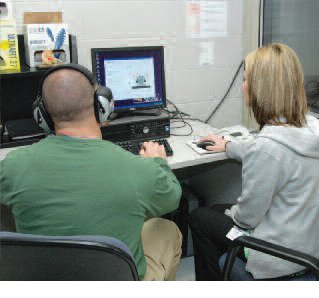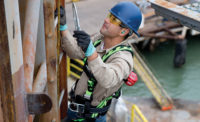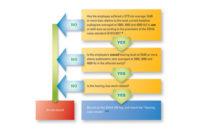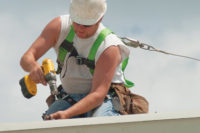 Introduction
Introduction
There are many challenges in managing occupational Hearing Conservation Programs: Fit, Selection, Protection, and Motivation. Environment may also be a major factor, such as at Shaw Industries Group, Inc., the world’s largest carpet manufacturer and a leading floor covering provider.
Although Shaw has invested in engineering and administrative controls to reduce noise levels, and continues to look for ways to decrease the exposure in the work environment, hearing protection is still needed for all workers. In fact, the company required a policy of dual protection for all its employees exposed to high noise levels.
Meanwhile, the local climate, which generates both extreme heat and humidity, often makes the wearing of earmuffs uncomfortable.
To reconcile these seemingly insurmountable “environmental” challenges to the company’s Hearing Conservation efforts, the safety manager resolved to get personal.
Doubling Up for Safety
“I’ve always worried: Are we providing the right protection? Are my employees wearing the protection correctly?” said Kenny Dillard, Safety Manager at the Dalton, Ga., facility. Shaw’s Hearing Conservation program had always incorporated small group training sessions with demonstrations of hearing protector fitting, but “we had no way to verify proper fit.”
Because the company was adamant about ensuring that workers were protected to safe levels, they mandated the use of dual protection (ear plugs and ear muffs) by all workers. Despite this policy and active enforcement, any workers identified with hearing-related issues during their annual audiogram were re-trained as part of their follow-up interventions on how to fit their particular ear plug.
“We would explain that their hearing had decreased and what that means. We asked them which ear plug they normally wear and had them demonstrate putting them in, noting if they put it in correctly or not. Then we would do a training session with them to show them the correct way and then work with them to make sure they could follow the example that was just provided,” said Dillard. It was assumed that if the fit looked good, adequate protection was being provided.
VeriPRO® Ear Plug Fit Verification
Dillard had investigated a variety of options when he heard about the Howard Leight® VeriPRO® ear plug fit-test system. He was intrigued that the system could test any manufacturer’s ear plugs. But when he saw the demonstration, he was “blown away." He “went straight back to the HR manager and plant manager, and said, ‘We’ve got to have this’.”
Since VeriPRO incorporates one-on-one training and individual worker reporting, both the HR manager and the plant manager signed on with their support, and the fit-testing system was obtained.
When Dillard’s Shaw facility integrated the VeriPRO system into its Hearing Conservation Program, the facility instituted new policies on hearing protection training and use. All workers showing a shift (decrease) in hearing now receive a fit-test as part of their “retraining.” All new (or re-hire) employees receive a fit-test prior to beginning work to find the appropriate ear plug and ensure they know how to fit it properly.
Dillard and the safety team use VeriPRO to document four of the six required elements of annual employee training according to OSHA’s Occupational Noise Exposure standard (29 CFR 1910.95):
• Health effects of noise (used in the context of the noise survey)
• Purpose of hearing protectors
• Types and advantages of different HPDs
• Selection, proper fit, use and maintenance of HPDs
The plant also initiated a program that allows workers to “graduate” out of dual protection. Workers who can demonstrate consistent fit providing protection to 82 dBA or lower noise exposure (under the ear plugs) no longer have to use both ear muffs and ear plugs. And as temperatures rise in the summer, workers have been eager to “get certified” on their ear plugs in order stop using dual protection. Not only do their employees love not having to wear ear muffs in hot, humid weather, it saves the company some expense as well.
Appropriate Ear Plug Selection, Protection — and Training
The goal at Shaw has always been to protect workers under their hearing protectors to an exposure less than 82 dB time-weighted average (TWA) as work shifts run 10-12 hours per day.
Shaw conducted VeriPRO Complete Checks on workers exposed to hazardous noise. Of the 146 workers tested thus far, the results were as follows:
• 17% achieved adequate Personal Attenuation Rating (PAR) on their first test
• 78% were able to achieve adequate protection at their first training session to bring their noise exposure to 82 dB or below
• 67% of workers changed from their initial ear plug selection, mostly due to comfort of proper fit
Most importantly, because of the personal training and selection assistance offered by fittesting, the average attenuation increased 10-12 dB from the first fit-test to successive fit-tests among the workers tested.
“For years we only offered ear plugs with a Noise Reduction Rating (NRR) of 33 and required dual protection,” said Dillard.
Interestingly, the fit-testing revealed that not only was a broader variety of ear plug models needed, but that many workers using single protection — ear plugs only — could achieve protection to 82 dBA or better. Now, several ear plug models, including those with NRRs in the 20-30 dB range (or with NRRs, significantly less than 30 dB), are offered to employees.
With the validation of a PAR for each worker’s ear and ear plug, Dillard said he realized that most workers required additional assistance regarding their HPDs.
“They almost forgot how to roll up their plugs and put them in correctly because they’ve been over-relying on the ear muffs. We were removing the ear muff to fit the ear plugs. I’d say, ‘Let’s roll these plugs up and put them in the way we’re supposed to.’ Initially, it was a lot of hit and miss,” he said.
Now, Dillard works with each worker until he or she finds the right ear plug, achieves the right fit, and knows what “right” feels like — and sounds like. Dillard’s strategy — to help employees achieve this goal — is to attain approximately the same level of protection in both ears.
After the final VeriPRO test is completed, the worker signs the PAR report. One copy goes into the safety file. A PDF of the report is stored on a shared file of “certified users” on the company server (a worker can be certified on multiple ear plug models). These files are then accessible to supervisors throughout the site.
Personal Validation
At Shaw, the new VeriPRO fit-test program “represents an ongoing investment in the workers and their personal safety,” said Dillard.
Indeed, as safety manager, he is taking the time during the program’s foundational year to “get personal” on hearing conservation with each employee. “This means that when an employee walks away, he can tell us, ‘Yes, I know what right feels like.’”
But Dillard knows that “feeling right” is often not enough. “I’ve done a lot of fit-tests where it appeared as if a worker put the device in correctly — but the attenuation was not enough to protect them. The workers thought they were getting appropriate protection, but in fact were not.
“The solution is sometimes simply trying a different ear plug,” he said.
Getting personal on a one-by-one basis also meant that the company’s previous reliance on packaged Noise Reduction Ratings was placed aside.
“Now it’s not just NRR to select hearing protection or visual inspections to validate use. We’re personal. We’re scientific. And we’re educating. With each employee’s documented fit-tested PAR, the company now has factual evidence that workers are protected,” he said.
Dillard believes that he now has a true one-on-one Hearing Conservation Program. “To get where we are now meant that we had to change our whole mindset — to realize that it’s all about each and every individual — and what fits them well.”
Safe-in-Sound
In February 2011, Shaw Industries was awarded the 2011 Safe-in-Sound Award for Best Practice in Hearing Conservation by the National Institute of Occupational Safety and Health (NIOSH) and the National Hearing Conservation Association (NHCA). The award honors companies and individuals who have shown their dedication to the prevention of noise-induced hearing loss. Shaw’s Fibers Division was recognized for the demonstrated results in noise control
and its use of fit testing to better train and protect workers.
In accepting the award, Dillard said that the Safe-in-Sound Award recognizes successes gained, and lays the groundwork for future noise abatement project and other interventions company-wide.
“Our successes have encouraged our team to seek out additional challenges,” said Dillard.
Case study: VeriPRO ear plug fit testing at Shaw Industries



